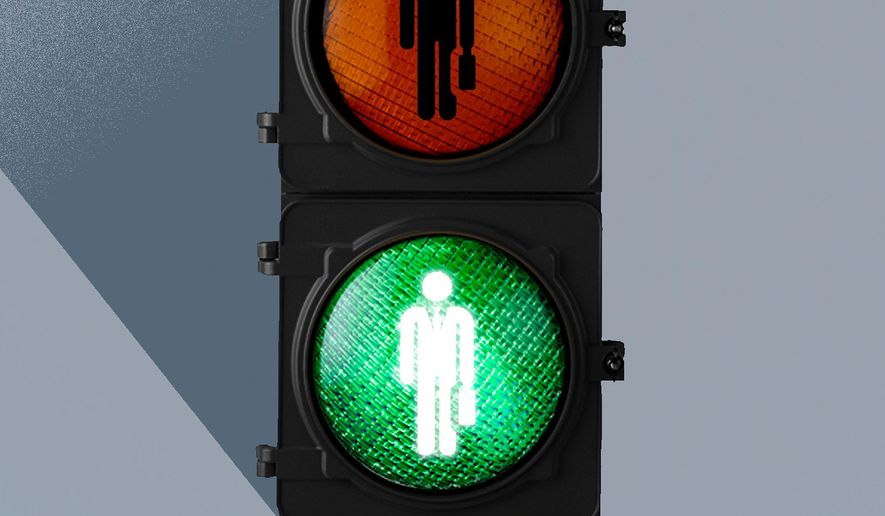OPINION:
What’s the matter with Kansas? When it comes to getting people back to work, not much.
The Sunflower State recently hit its lowest unemployment rate ever — 2.3% — and the rate has been less than 3% for over a year. Kansas also has one of the nation’s highest labor force participation rates. This success is the result of commonsense policies that are surprisingly uncommon, so other states should follow Kansas’ lead when legislative sessions convene in early 2023.
Kansas has always been a pro-work state, but perhaps its best workforce policy is nearly 10 years old. In 2013, lawmakers connected unemployment payments to the strength of the economy, something only three states had done to that point. It’s called unemployment indexing, and it turns what’s usually an anti-work pillar of the welfare system into a get-a-job program.
Before this law, Kansas let unemployed workers collect taxpayer checks for half a year, or 26 weeks. Now, payments last that long only if unemployment is higher than 6%. When the rate falls below that threshold, payments cut off at 20 weeks, and at 4.5% unemployment or lower, the checks stop at 16 weeks. The point is to move people into work quickly when times are good while ensuring they have longer-term support when bad times inevitably come.
This simple policy spurs work in two ways. The first is obvious: When people don’t get paid not to work, they look for a paycheck. Before indexing went into effect, Kansas trailed all its neighbors in the length of time people stayed on the taxpayer-funded unemployment program. By the time the pandemic hit, the state led its peers, with Kansans leaving unemployment after less than 12 weeks on average.
Indexing has proved its worth in the past year. Democratic Gov. Laura Kelly and the Legislature suspended it from early 2020 through mid-2021, and while the state’s recovery was strong, it would have been stronger with the policy in place. Sure enough, shortly after it went back into effect, Kansas reached its pre-pandemic unemployment level of slightly more than 3%, then dropped to historic lows over the summer. It has since increased a small bit, yet Kansas is still well ahead of where it was this time three years ago.
The second way that indexing spurs work is by keeping business taxes low. Before the policy went into effect, Kansas had a mere $100 million in its unemployment trust fund or less than a quarter of what its neighboring states had. The farms, small businesses and manufacturers that pay into the trust fund feared that another downturn would lead to higher taxes, lest the trust fund run out and unemployment payments cease. That threat prevented untold investment and job creation.
No longer. With fewer people spending less time receiving unemployment payments, the trust fund rose to a billion dollars before the pandemic. That was more than enough to cover higher payments during the worst of the crisis. Tax increases are still off the table, causing employers to expand their operations and add jobs at a healthy pace. They have the certainty and stability that comes from this sound policy.
Had Kansas stopped with unemployment indexing, it would still have one of the best job markets in America. Yet lawmakers doubled down on moving people from welfare to work this past spring when they passed a robust work requirement for food stamps.
Kansas now requires nearly 15,000 able-bodied adults without dependents to find work or sign up for job training as a condition of receiving food stamps. This “employment and training” work requirement — which the Republican Legislature passed over the governor’s veto — replaces a traditional work requirement that D.C. has banned through at least April, and it has the potential to cover more people. Kansas is one of just a handful of states to have this policy.
Both these policies are good, but Kansas could also make them better. On unemployment indexing, lawmakers could drop the maximum benefits to 12 weeks, getting people to work even faster. On food stamps, they could extend the work requirement to cover able-bodied adults up to 59 years old (it currently cuts off at age 50), as well as those with greater flexibility to work because their dependents are at school. Either reform would extend Kansas’ pro-work leadership, likely bringing its unemployment rate even lower and labor force participation rate even higher.
But the bigger need is for other states to learn from Kansas. Only 10 have some form of unemployment indexing, while fewer than that have food stamp employment-and-training work requirements. With a recession on the horizon, states should be getting people into work and off welfare as quickly as possible, while laying the groundwork for a quick recovery. Hardly anything is the matter with Kansas, but a lot could go wrong for most other states.
• Nick Adolphsen is state government affairs director at the Foundation for Government Accountability, where Michael Greibrok is senior research fellow.




Please read our comment policy before commenting.